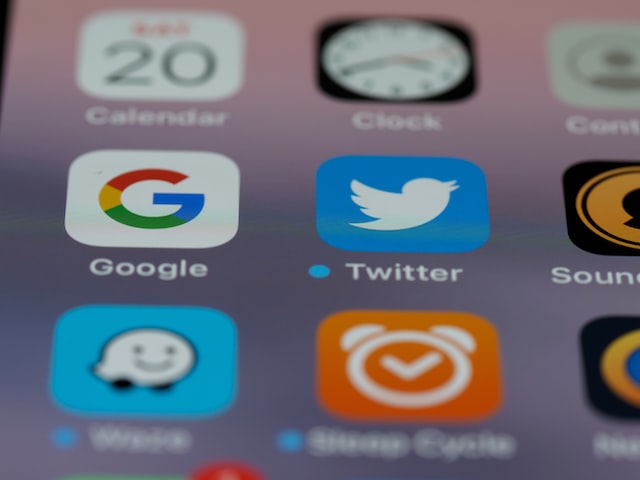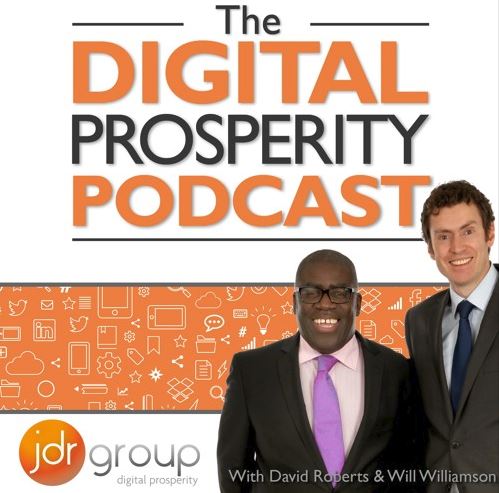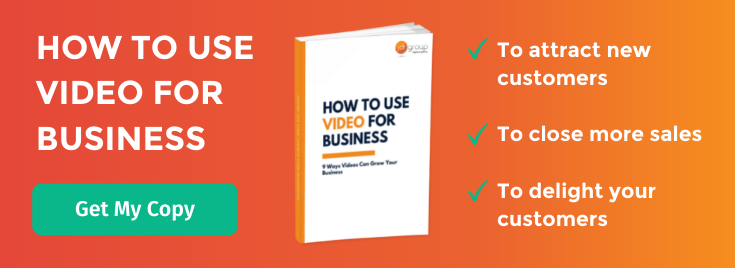Which Social Media Platforms Should Your B2B Small Business Use?
by Leanne Mordue on 07-Sep-2022 12:03:48

There are various social media platforms available to businesses, but for B2B use, the choice is quite straightforward. LinkedIn is the most popular and productive networking platform used by B2B companies by a long margin, but many businesses also find it beneficial to use Facebook, Twitter, or Instagram – and YouTube has evolved from a social network into a superb video content channel that we recommend all businesses explore seriously. There’s not currently any need to invest seriously into Tik-Tok, Snapchat, Pinterest, Reddit etc -unless you know that they are used by your customers – as these platforms are not utilised heavily by B2B industries.
Which social media platforms should your SME be using? As there isn’t enough time in the day to use all of them to their full potential, we recommend focusing your time and money on one or two platforms, and commit yourself to being active and consistent, while closely monitoring your results.
LinkedIn’s professional and business orientation makes it an excellent tool for B2B marketing. It’s estimated that more than 630 million professionals are on this platform world-wide, of which approximately 63 million are decision makers.
Being Active On LinkedIn Can Serve Several Purposes:
1) It can function as a networking tool where you get to connect with potential supply partners, industry influencers, and customers. LinkedIn excels at professional demographic targeting, which you can use to your advantage in advertising campaigns and connection building.
2) You can build a strong online presence and reputation for innovation and thought leadership, which can attract top decision makers and executives in your industry.
3) You can use LinkedIn as an active marketing and lead generation tool, not just as a social network, as it allows you to run ads, campaigns, and sponsored content with excellent conversion rates and at low cost.
4) If you’re already using a top-rated CRM like HubSpot, you can connect your business account to LinkedIn to import contacts and start building connections straight away through targeted messaging campaigns.
Once the leading social media platform for business users, Facebook has taken a backseat to LinkedIn in this regard over the past several years. However, Facebook still has multiple uses related to awareness and consideration marketing for B2B decision-makers, from providing customer service to directing ads to targeted audiences. Many businesses still operate a company Facebook page, and the platform is important because of the number of people who use it for crossover purposes – casually researching work-related queries while using a personal Facebook account.
Facebook is an excellent platform for informally engaging with prospects by liking and sharing their content and for publishing links to your blog posts, and is one of the best social media platforms for live video feeds. Many B2B businesses use Facebook to target prospects at the lower awareness and consideration buyer stages, while investing more in LinkedIn for decision-level lead generation.
Moreover, Facebook can support your wider digital marketing efforts as a social listening tool, even if you don’t use the platform actively. Keeping track of company mentions on Facebook, competitor reviews, or customer sentiment provides valuable insights you can use to further refine your B2B marketing campaigns.
This highly visual platform offers a great opportunity to build an appealing brand that generates steady engagement among customers. B2C businesses use Instagram to directly promote products and connect to their audiences, and you’ll find many retail businesses, design consultancies, restaurants, and other service businesses on Instagram – but what about B2B?
Many product based B2B businesses also find value in marketing through Instagram. Instagram content is searchable on Google, so investing in the platform could increase your brand prominence for image searches. The key is getting creative and delivering content that adds value to other businesses using native Instagram features. For example:
- You can use image carousels to offer a series of insider tips or industry research data.
- Regular feed posts with short video clips of customer testimonials.
- Using Highlights to keep product information organised and visible.
- Live streaming for Q&A sessions with leads, or behind-the-scenes content.
If your target buyers use and value LinkedIn for research or networking, it’s worth running a test campaign and monitoring your returns.
Twitter is the most social of the social networks available to businesses, effectively a continuous real-time conversation between users in which trending events are discussed and promoted. As such, Twitter feeds are busy and fast moving, with a focus on short-fire content. It’s not the place to publish your in-depth articles and evergreen guides. Using Twitter effectively requires a strong time investment and a good understanding of the platform, so we only recommend Twitter to people who enjoy using the platform themselves, and whose target customers are also actively engaged.
Like Facebook, Twitter is an excellent social listening platform that businesses do well to monitor for brand mentions and relevant hashtags – you can do this through Google searches or hashtag searches on Twitter itself. In addition, many B2B businesses use Twitter as a live broadcast platform during face-to-face events, trade shows and conferences.
YouTube
YouTube has morphed from being a social video sharing site similar to Tik-Tok, to the world’s leading open video content hosting platform.
YouTube is now the world’s second most popular search engine after Google (which now owns YouTube). This means that potential customers could be using YouTube to search for the products and services you offer – and also, that most of the video results brought up by Google searches are hosted on YouTube.
There are many uses of video content for B2B businesses. Depending on your vertical, you can use YouTube to share product demos, tutorials, customer testimonials, case studies, and tell your brand story. Whether or not you choose to engage in YouTube as a social platform, you can host video content on YouTube for free and integrate this content with your other social media platforms, share them through email marketing, or embed them on your website.
Next Steps
Overall, LinkedIn is the best tool for B2B marketing, and YouTube the number one for video hosting. However, the networks you choose should ultimately be determined by which platforms your customers use to search for information and make purchase decisions. We can help you determine and implement the best social media strategy for your business to help you grow your revenues online. To find out more, please call 01332 215152 today
Image source: Unsplash
- Inbound Marketing (SEO, PPC, Social Media, Video) (829)
- Strategy (368)
- Sales & CRM (195)
- Marketing Automation & Email Marketing (191)
- Business Growth (167)
- Website Design (161)
- Hubspot (138)
- Lead Generation (117)
- Google Adwords (99)
- Content Marketing (94)
- Conversion (53)
- Case Studies (47)
- News (47)
- Ecommerce (39)
- Webinars (35)
- SEO (26)
- AI (20)
- Events (19)
- LinkedIn Advertising (17)
- Video (17)
- Video Selling (15)
- Software training (13)
- Niche business marketing (11)
- The Digital Prosperity Podcast (10)
- Facebook Advertising (6)
- HubSpot Case Studies (5)
- January 2026 (7)
- December 2025 (15)
- November 2025 (6)
- October 2025 (17)
- September 2025 (16)
- August 2025 (14)
- July 2025 (14)
- June 2025 (5)
- May 2025 (19)
- April 2025 (15)
- March 2025 (13)
- February 2025 (13)
- January 2025 (8)
- December 2024 (2)
- November 2024 (4)
- October 2024 (21)
- September 2024 (4)
- August 2024 (8)
- July 2024 (14)
- June 2024 (16)
- May 2024 (25)
- April 2024 (15)
- March 2024 (18)
- February 2024 (5)
- January 2024 (10)
- December 2023 (6)
- November 2023 (10)
- October 2023 (13)
- September 2023 (12)
- August 2023 (14)
- July 2023 (13)
- June 2023 (14)
- May 2023 (15)
- April 2023 (13)
- March 2023 (14)
- February 2023 (13)
- January 2023 (15)
- December 2022 (13)
- November 2022 (6)
- October 2022 (8)
- September 2022 (22)
- August 2022 (15)
- July 2022 (13)
- June 2022 (16)
- May 2022 (14)
- April 2022 (16)
- March 2022 (17)
- February 2022 (11)
- January 2022 (8)
- December 2021 (6)
- November 2021 (7)
- October 2021 (11)
- September 2021 (10)
- August 2021 (7)
- July 2021 (7)
- June 2021 (4)
- May 2021 (4)
- April 2021 (1)
- March 2021 (3)
- February 2021 (5)
- January 2021 (4)
- December 2020 (7)
- November 2020 (6)
- October 2020 (5)
- September 2020 (9)
- August 2020 (18)
- July 2020 (17)
- June 2020 (17)
- May 2020 (10)
- April 2020 (21)
- March 2020 (24)
- February 2020 (21)
- January 2020 (12)
- December 2019 (23)
- November 2019 (12)
- October 2019 (14)
- September 2019 (16)
- August 2019 (15)
- July 2019 (13)
- June 2019 (6)
- May 2019 (8)
- April 2019 (4)
- March 2019 (2)
- February 2019 (2)
- January 2019 (2)
- December 2018 (3)
- November 2018 (24)
- September 2018 (11)
- August 2018 (9)
- June 2018 (3)
- May 2018 (6)
- April 2018 (14)
- March 2018 (12)
- February 2018 (16)
- January 2018 (15)
- December 2017 (15)
- November 2017 (18)
- October 2017 (23)
- September 2017 (19)
- August 2017 (28)
- July 2017 (27)
- June 2017 (25)
- May 2017 (18)
- April 2017 (17)
- March 2017 (16)
- February 2017 (17)
- January 2017 (14)
- December 2016 (21)
- November 2016 (27)
- October 2016 (25)
- September 2016 (16)
- August 2016 (20)
- July 2016 (19)
- June 2016 (14)
- May 2016 (20)
- April 2016 (24)
- March 2016 (22)
- February 2016 (28)
- January 2016 (27)
- December 2015 (28)
- November 2015 (19)
- October 2015 (9)
- September 2015 (12)
- August 2015 (5)
- July 2015 (1)
- June 2015 (10)
- May 2015 (3)
- April 2015 (11)
- March 2015 (14)
- February 2015 (15)
- January 2015 (12)
- December 2014 (2)
- November 2014 (23)
- October 2014 (2)
- September 2014 (2)
- August 2014 (2)
- July 2014 (2)
- June 2014 (7)
- May 2014 (14)
- April 2014 (14)
- March 2014 (7)
- February 2014 (2)
- January 2014 (7)
- December 2013 (9)
- November 2013 (14)
- October 2013 (17)
- September 2013 (3)
- August 2013 (6)
- July 2013 (8)
- June 2013 (4)
- May 2013 (3)
- April 2013 (6)
- March 2013 (6)
- February 2013 (7)
- January 2013 (5)
- December 2012 (3)
- November 2012 (2)
- September 2012 (1)
Subscribe by email
You May Also Like
These Related Blogs

LinkedIn Ads Vs Twitter Ads - Which Is The Best Option For Your B2B Business?
Social media advertising has expanded in scope and effectiveness to rival Google Ads as a source of online sales. Our general guidance for social medi …

Marketing Automation Tools Comparison – 4 Of The Best Platforms
There are now dozens of different marketing automation tools available on the market. They range widely in terms of price and functionality. Some are …

What Strava Can Teach Us About Marketing - Season 4 Episode 1 of the Digital Prosperity Podcast
The Digital Prosperity Podcast is the show for small- to medium-sized businesses who want to get more enquiries, increase conversion and, ultimately, …




